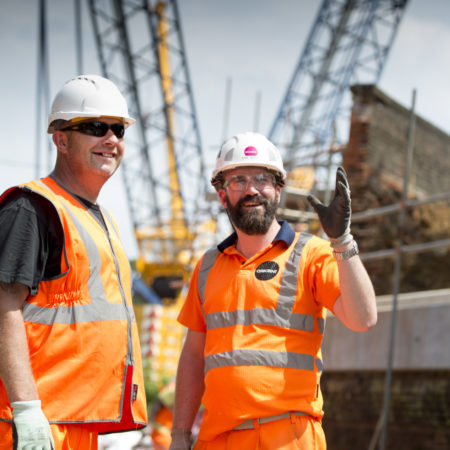Has There Ever Been a More Exciting Time to Work in Construction?
The construction industry is experiencing a period of transformational change possibly not matched in terms of pace and diversity since the early 20th Century. Back then, innovations such as reinforced concrete and fireproof steel frames allowed designs that set new standards for the height, scale and vision of what buildings could be.
We are in the midst of a transformation that could be even more significant, one that is redefining how construction projects are conceived and executed.
People
Many people left the industry following the recession from 2008 to 2012. Most of them won’t be coming back now that they’ve found work in other sectors. Time is also taking its toll as experienced workers reach retirement age.
This is both a problem and an opportunity. Construction industry associations and many forward-thinking contractors are focusing on new recruitment methods. These include revamping degree programs at tech and trade schools, campaigns to attract more women and minorities, and appealing to younger generations with a host of new construction technology opportunities. These initiatives are gradually changing perceptions about a career in construction.
There’s still a long way to go but at least the direction of travel is becoming clearer.
Business Intelligence
The industry has always had plenty of data. What’s been lacking is the ability to capture, organise and interrogate that data, at scale, to produce meaningful business intelligence.
Contractors can harness the power of information with cloud-based software and detailed data collection and reporting solutions. And by integrating and analysing data throughout the organization and across projects construction firms are on the verge of an information revolution. With data-driven business intelligence we can more accurately forecast and future-proof our business.
Contractors can collect and evaluate far greater amounts of construction data than ever before, and all quite easily.
Mobile Working
Increasingly sophisticated mobile devices are rapidly becoming mainstream rather than a novelty on construction sites. With intuitive construction apps, workers in the field can access and collect data on their laptops, smartphones, tablets or even wearable devices.
Data can be analysed right from the work site. It’s now possible to maintain an up-to-the-minute look at the true health and productivity of construction projects. The cloud makes it possible to collect and share data using mobile devices, which will continue to have a dramatic impact on construction collaboration and productivity.
Building Design
UK contractors are now pretty familiar with BIM. As 4D and 5D BIM technology develops alongside innovations like augmented reality devices and AI technology, the concept of building design is being revolutionised. It’s possible to visualize projects in a real and immersive way from the ground up, before construction even begins.
Modular and Offsite
The whole idea of where construction work takes place is also changing. Pre-fabrication of materials, parts and even buildings is on the cusp of moving from being a novelty to the expectation. Many contractors are transforming into design-build firms with modular construction or pre-fab facilities that allow them to begin building in a central location.
Creating structures simultaneously with site and foundation work allows projects to be completed 30% to 50% sooner than traditional construction. Modular construction reduces material waste and allows contractors to sidestep costly weather delays. Modular construction also provides greater flexibility. Buildings can be disassembled and relocated for new uses or materials can be repurposed rather than becoming waste.
Drones and Robots
Drones help to provide visualization of both work in progress and work remaining. They can collect live data from the site and provide key safety assessments. They are also being integrated into other construction technologies so that the data collected can influence business intelligence and forecasting models. The initial success stories make drones one of the most sought-after technologies.
Robotics and automated smart machines are helping boost productivity and accuracy, while reducing overheads and waste. Robotics are being used for everything from bricklaying and foundation building to autonomous construction equipment. 3D printing of materials is also becoming more common in both modular and onsite construction.
Automating manual processes reduces the time and labour needed on construction projects, which will help address some of the skills issues. Contractors can deliver projects faster and more efficiently, while offsetting the loss of skilled labourers.
Materials and Nanotechnology
New materials will continue to drive design innovation. Scientists at Exeter University have developed a technique to add graphene (sheets of carbon one atomic layer thick) to concrete. This reinforcement method produces a product twice as strong as conventional concrete that is also highly water resistant.
With so much change going on it feels like a new golden age for the industry – there’s never been a more exciting time to be working in construction.

